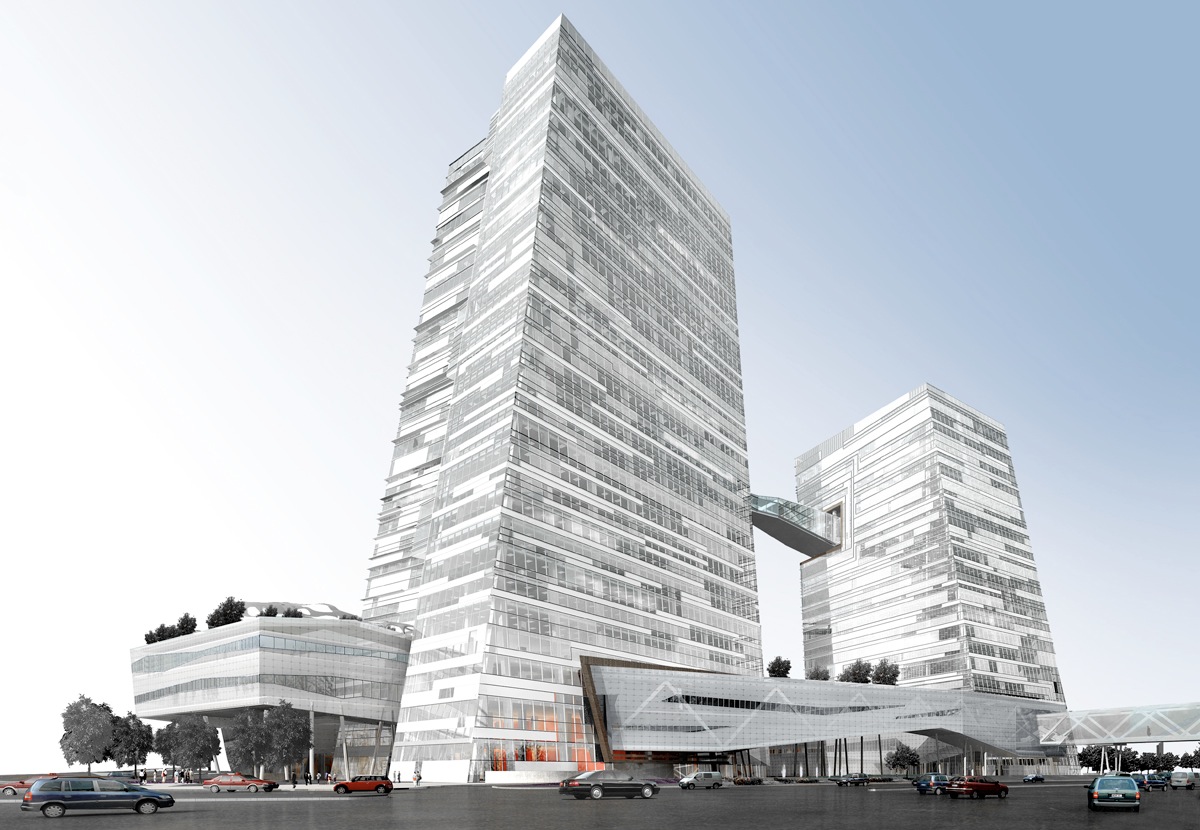Check out this project completed by NBBJ Los Angeles (my office). The team here did a great job executing this. Congrats on the ArchDaily, Bustler postings!
Thursday, February 26, 2009
Sunday, February 22, 2009
The Torus
Here is a strategy I am working on in Grasshopper for creating rationalized doubly curved surfaces. The example below uses a torus (defined parametrically using a GH function component). The use of a toroidal "slice" to drive the geometry allows for flat panels, repetitive panel sizes, and quadrilateral panel shapes.




Surface Analysis
Below are examples of using GH for analysis. By being able to perform these kinds of analysis directly within GH, there is the opportunity to use the data as a generative tool within a larger parametric framework. The sun system was created at tedngai.net and there you can find the definitions for the last two files (daily and yearly analysis). 

Surface Curvature Analysis (gives similar resultes as Rhino's CurvatureAnalysis command)
 Flat Panels Analysis (colors flat panels based on how far they deviate from each other)
Flat Panels Analysis (colors flat panels based on how far they deviate from each other)
 Sun Angle Visualization (visualizes how the sun is hitting a surface at a given time)
Sun Angle Visualization (visualizes how the sun is hitting a surface at a given time)
 Daily Sun Angle Analysis (definition found at tedngai.net)
Daily Sun Angle Analysis (definition found at tedngai.net)
 Yearly Sun Angle Analysis (definition found at tedngai.net)
Yearly Sun Angle Analysis (definition found at tedngai.net)
 Flat Panels Analysis (colors flat panels based on how far they deviate from each other)
Flat Panels Analysis (colors flat panels based on how far they deviate from each other) Sun Angle Visualization (visualizes how the sun is hitting a surface at a given time)
Sun Angle Visualization (visualizes how the sun is hitting a surface at a given time) Daily Sun Angle Analysis (definition found at tedngai.net)
Daily Sun Angle Analysis (definition found at tedngai.net) Yearly Sun Angle Analysis (definition found at tedngai.net)
Yearly Sun Angle Analysis (definition found at tedngai.net)Tuesday, February 17, 2009
Planning with GH Prt. 2
Sunday, February 15, 2009
Planning with GH Prt. 1
One of my ongoing interests with Grasshopper is in using it as a master planning and building programming tool. This interest is reflected in my eVolo skyscraper competition entry: Anfractuo[c]ity.
Below is a GH experiment in using Voronoi tessellation to drive building massing while also keeping up-to-date calculations of all site areas areas, site coverages, and footprint areas. My goal is to eventually create a GH definition which behaves similarly to this Associative Design video.
Anyway here are some early tests:




Below is a GH experiment in using Voronoi tessellation to drive building massing while also keeping up-to-date calculations of all site areas areas, site coverages, and footprint areas. My goal is to eventually create a GH definition which behaves similarly to this Associative Design video.
Anyway here are some early tests:




Wednesday, February 11, 2009
USC Parametric Lecture and GH Mini-Tutorial
On Monday, I presented a lecture on parametric techniques in practice followed by a tutorial on Grasshopper. The presentation was for Jeffrey Kim's Rhino course. Jeff is an instructor and principal of Forward Design. The students were enthused by the technology and were quick to pick up some of the basics of GH. I introduced the same panel exercise as I did before with my office (NBBJ).
 Panel exercise by Jeffrey Chinn
Panel exercise by Jeffrey Chinn Panel exercise by Patrick Wong
Panel exercise by Patrick WongSunday, February 8, 2009
Ribbing
Another Grasshopper study. This definition is similar to the rib definition found at Lift Architects. However, the Lift one only generates a rib structure in X, Y directions. This one cuts in the Z-direction and creates sectional ribs around a circular path allowing for a complete enclosure. The definition uses the same starting surface as the previous tessellation post.



Tessellation
A Grasshopper experiment in surface tessellation and creating variable openings within the triangles. This GH definition was rebuilt, modified, and optimzed based on a definition found at Designalyze.




Tuesday, February 3, 2009
NBBJ Grasshopper Workshop 1
Below are some of the results from the Grasshopper workshop I did for my office, NBBJ Los Angeles. We did two exercises. The first was an exercise in creating a surface which changed shape in relation to a point object. The second (featured below) was an exercise where the participants modeled a unique panel object and then propagated it across a curved surface. Some participants had not previously used Rhino.








Subscribe to:
Comments (Atom)





